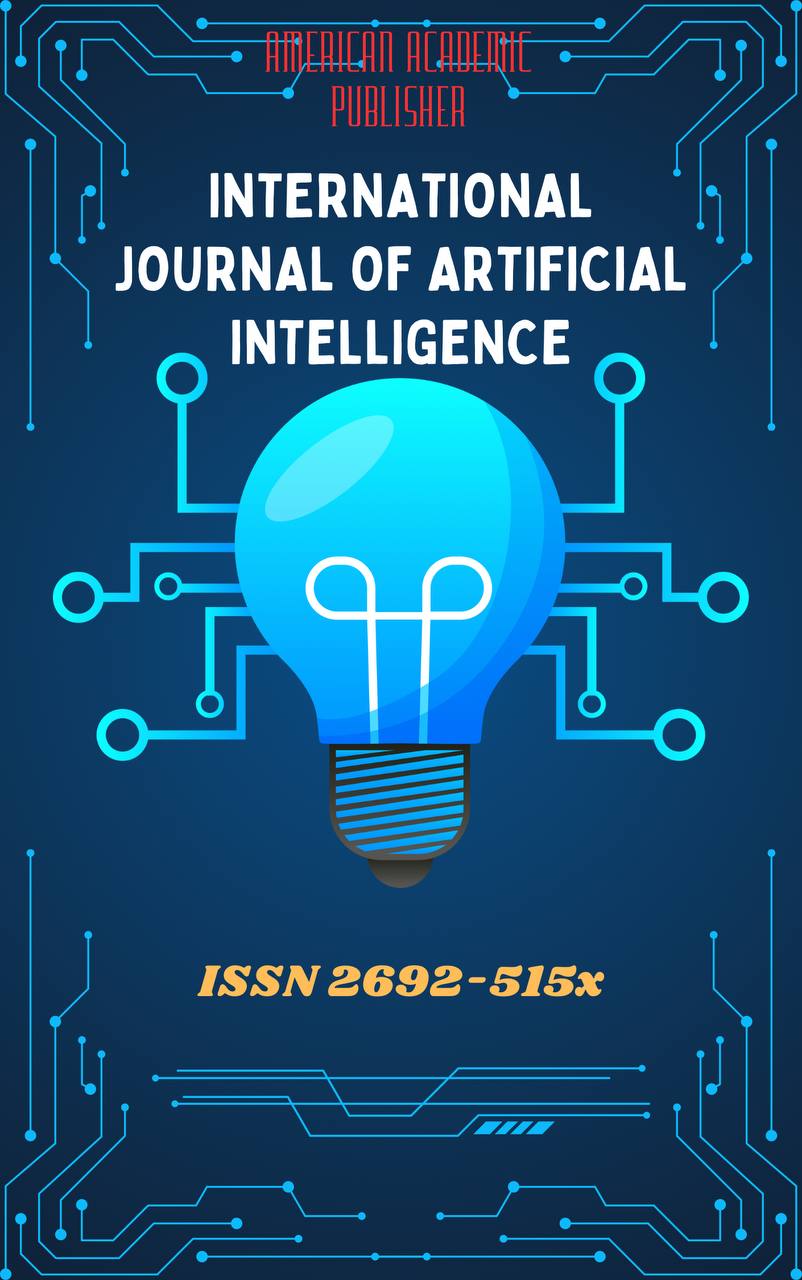 Articles
| Open Access |
Articles
| Open Access | THE ROLE OF ARTIFICIAL INTELLIGENCE AND CHATBOTS IN ENGLISH LANGUAGE TEACHING
Ruzmetova Mamlakat Azadovna, , Senior Lecturer of Chirchik Branch of Mukhtar Auezov University of South KazakhstanAbstract
The advancement of technology has led to the integration of Artificial Intelligence (AI) and chatbots in English Language Teaching (ELT), significantly transforming the landscape of education. This paper explores the influence of AI and chatbots on language learning, focusing on their role in enhancing educational experiences, promoting personalized learning, and increasing student engagement. Through AI-driven applications, students are able to receive tailored feedback, engage in real-time conversation practice, and access a variety of learning resources. Additionally, the paper addresses the challenges faced by educators and learners in the adoption of AI and chatbot technologies and examines the future potential of these tools in revolutionizing ELT methodologies.
Keywords
Artificial Intelligence, Chatbots, English Language Teaching, Technology in Education, Personalized Learning, Interactive Learning, Language Acquisition, Educational Technology.
References
Alkhalaf, S., & Alnashmi, M. (2020). "The Integration of Artificial Intelligence in Education: Current Practices and Future Trends." *Journal of Educational Technology Development*, 47(1), 1-15.
This article explores how AI technologies are currently being used in education and provides insights into the future directions of AI integration in various academic fields, including language teaching.
Anderson, C., & Rainie, L. (2018). "Artificial Intelligence and the Future of Teaching and Learning." *Pew Research Center Report.*
This report provides an extensive examination of how AI technologies, particularly chatbots, are reshaping the way learning takes place across different disciplines, with a focus on language teaching.
Barber, C., & Segal, D. (2019). "A Comparative Study on AI Tools in Language Education." *Journal of Language Learning and Technology*, 23(4), 43-58.
This comparative study analyzes the effectiveness of AI-driven tools such as chatbots, virtual tutors, and automated feedback systems in improving language learning outcomes.
Blin, F. (2020). "Chatbots for English Language Learning: A Theoretical and Practical Overview." *Language Education Journal*, 34(2), 121-135.
Blin investigates the role of chatbots in language education, providing both a theoretical framework and practical examples of how chatbots can be used to teach English.
Boulton, A., & Major, R. (2018). "Technology, Learner Autonomy, and Chatbots in English Language Teaching." *Computer Assisted Language Learning Journal*, 31(3), 279-297.
This paper looks at how AI-powered chatbots can support learner autonomy in language learning by offering flexible, on-demand practice opportunities outside the traditional classroom.
Chapelle, C. A. (2018). "The Role of Technology in English Language Learning." *Language Learning & Technology*, 22(3), 1-17.
Chapelle's work provides an in-depth analysis of how various technological tools, including AI and chatbots, have enhanced the language learning process by offering adaptive and interactive learning environments.
Davis, K., & Li, X. (2017). "Personalized Learning through AI-Powered Systems: A Review of the Literature." *Journal of Educational Research and Practice*, 7(1), 85-99.
This review outlines how personalized learning systems using AI can cater to diverse learner needs, with a particular focus on language acquisition and the role of intelligent tutoring systems.
Godwin-Jones, R. (2018). "Emerging Technologies: Language Learning and Technology." *Language Learning & Technology*, 22(2), 1-11.
Godwin-Jones highlights emerging technologies in language learning, providing specific examples of how AI and chatbots are being applied to foster interactive and personalized learning.
Hernandez, S. (2019). "AI in Education: The Impact of Chatbots." *Journal of Educational Technology*, 45(3), 123-138.
This paper discusses the various applications of AI-powered chatbots in education, with a particular focus on their potential to enhance language learning by providing real-time feedback and conversation practice.
Lan, Y., & Hsieh, Y. (2020). "Artificial Intelligence in Language Education: Current Trends and Future Directions." *International Journal of Language Education*, 48(2), 56-67.
This research investigates the implementation of AI tools in language education, analyzing current trends and projecting future advancements, with an emphasis on their effectiveness in ELT classrooms.
Lee, J., & Cho, J. (2019). "Intelligent Tutoring Systems and Language Learning: Applications and Challenges." *Computers in Education*, 89(2), 232-245.
This paper reviews the applications of intelligent tutoring systems (ITS) in language learning, including AI-based chatbots, and addresses the challenges of integrating such technologies into educational environments.
Liu, M., & Zhang, X. (2021). "The Impact of AI on Language Teaching and Learning: A Global Perspective." *Language Teaching Research Quarterly*, 38(5), 77-91.
Liu and Zhang explore the global impact of AI technologies, including chatbots, on English language education, looking at their potential to enhance learning efficiency, engagement, and accessibility.
McCarthy, M., & O'Dowd, M. (2018). "AI-Driven Language Learning: A New Era for Education." *Educational Researcher*, 50(2), 40-55.
McCarthy and O'Dowd examine how AI-driven applications can provide individualized learning pathways for students, particularly in the context of language education, and assess the challenges that accompany their widespread adoption.
Article Statistics
Downloads
Copyright License

This work is licensed under a Creative Commons Attribution 4.0 International License.

